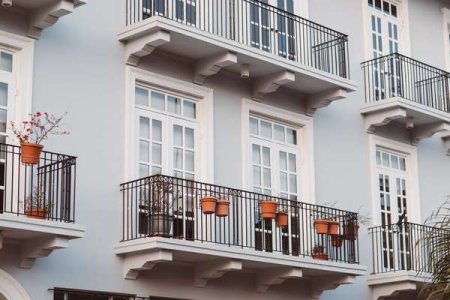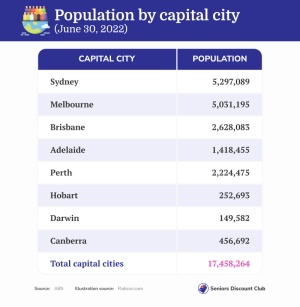Survey reveals seniors 'resistant' to new housing developments
- Replies 12
A recent survey revealed a significant generation gap regarding housing density in local neighbourhoods.
The study, conducted by The Susan McKinnon Foundation, shows that older Australians (born between 1945 and 1964) are almost twice as likely to oppose new low-rise apartment developments compared to younger adults born after 1996.
This divide is particularly concerning as Australia grapples with a serious housing affordability crisis. In major cities, the demand for housing far exceeds the available supply.
Urban planners have also stressed the importance of increasing housing density to make homes more affordable for those who find it challenging to enter the housing market.
The study found that 32 per cent of NSW residents born between 1996 and 2010 want more one to three-story apartments in their neighbourhoods.
However, only 18 per cent of seniors, those born between 1945 and 1964, and a mere 7 per cent of the post-war generation agree with this idea.
David Borger, the Chair of Housing Now and a former NSW Labor housing minister, said this data shows the urgent need for a change in the mindset of older generations.
'Older generations have been traditionally resistant to new housing—and this needs to end,' he argued.
He further explained that the older generations have benefited from property ownership, but the same opportunities have not been extended to younger generations.
'[Seniors] have a social responsibility to support more housing development in their area to allow the next generation to live close to work, family, and amenity.'
The housing crisis in Australia has led to a heated discussion on how to address it. Many experts suggest that one of the best solutions is to increase the number of houses available, especially by building more in urban areas where people want to live.
Data from the United Nations to Guardian Australia revealed that Australian cities have lower population density than many other cities worldwide.
While Australia has seen significant population growth and housing construction over the past decade, the increase in density is mainly seen in specific areas, particularly around city centres, especially in Melbourne and Sydney.
When we look at the top 20 suburbs that have experienced the most significant increases in population density over the past decade, twelve of them are located in metropolitan Sydney.
Leading the list is Wentworth Point in Sydney's west, followed by Zetland and Waterloo to the south of the CBD. Southbank, located south of Melbourne's CBD, ranks third, and Newstead in Brisbane comes in fourth.
Is building more apartments the answer to Australia's housing crisis?
In August, the government promised to construct 1.2 million new homes within five years starting next July.
They also agreed on a National Planning Reform Blueprint, which encourages medium and high-density housing in convenient locations near public transport and the adjustment of local government's plans to align with housing goals.
The federal government is offering $3 billion in financial incentives to states and territories that contribute to achieving this target.

Members, we want to know what you think. Do you think building more one- to three-story apartment buildings in big cities is a good idea to make it easier for more Australians to buy homes? Please share your thoughts in the comments.
The study, conducted by The Susan McKinnon Foundation, shows that older Australians (born between 1945 and 1964) are almost twice as likely to oppose new low-rise apartment developments compared to younger adults born after 1996.
This divide is particularly concerning as Australia grapples with a serious housing affordability crisis. In major cities, the demand for housing far exceeds the available supply.
Urban planners have also stressed the importance of increasing housing density to make homes more affordable for those who find it challenging to enter the housing market.
The study found that 32 per cent of NSW residents born between 1996 and 2010 want more one to three-story apartments in their neighbourhoods.
However, only 18 per cent of seniors, those born between 1945 and 1964, and a mere 7 per cent of the post-war generation agree with this idea.
David Borger, the Chair of Housing Now and a former NSW Labor housing minister, said this data shows the urgent need for a change in the mindset of older generations.
'Older generations have been traditionally resistant to new housing—and this needs to end,' he argued.
He further explained that the older generations have benefited from property ownership, but the same opportunities have not been extended to younger generations.
'[Seniors] have a social responsibility to support more housing development in their area to allow the next generation to live close to work, family, and amenity.'
The housing crisis in Australia has led to a heated discussion on how to address it. Many experts suggest that one of the best solutions is to increase the number of houses available, especially by building more in urban areas where people want to live.
Data from the United Nations to Guardian Australia revealed that Australian cities have lower population density than many other cities worldwide.
While Australia has seen significant population growth and housing construction over the past decade, the increase in density is mainly seen in specific areas, particularly around city centres, especially in Melbourne and Sydney.
When we look at the top 20 suburbs that have experienced the most significant increases in population density over the past decade, twelve of them are located in metropolitan Sydney.
Leading the list is Wentworth Point in Sydney's west, followed by Zetland and Waterloo to the south of the CBD. Southbank, located south of Melbourne's CBD, ranks third, and Newstead in Brisbane comes in fourth.
Is building more apartments the answer to Australia's housing crisis?
In August, the government promised to construct 1.2 million new homes within five years starting next July.
They also agreed on a National Planning Reform Blueprint, which encourages medium and high-density housing in convenient locations near public transport and the adjustment of local government's plans to align with housing goals.
The federal government is offering $3 billion in financial incentives to states and territories that contribute to achieving this target.
Key Takeaways
- According to a survey by The Susan McKinnon Foundation, seniors are more likely to resist new low-rise housing development than young adults.
- The survey revealed that 32 per cent of residents in New South Wales, born between 1996 and 2010, favour more one to three-storey apartments in their local area, compared to just 18 per cent of seniors.
- Former NSW Labor Housing Minister and Housing Now Chair David Borger stated that older generations need to shift their mindset and support more housing development in their areas.
- Experts suggest that one of the best solutions for the housing crisis is to increase the number of houses available, especially by building more in urban areas where people want to live.
Members, we want to know what you think. Do you think building more one- to three-story apartment buildings in big cities is a good idea to make it easier for more Australians to buy homes? Please share your thoughts in the comments.









